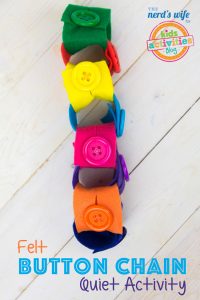
Do you have a baby with colic? It can be so hard, because your baby is so young and you don’t know how to help. My friend’s baby had colic for several months and it was the most stressful situation for the mother, to not be able to comfort her own child. Today, we want to give you her best suggestions, mixed with a few of our own.

According to ColicCalm.com, colic typically follows a predictable course, including an onset, a peak period (during which symptoms are most difficult to relieve), and an ending characterized by resolution of all symptoms.
- Start: Symptoms of colic typically begin around 3 weeks of age. Symptoms typically occur in the evening, and last for several hours.
- Peak: The peak period for symptoms is typically 4 to 6 weeks of age, with symptoms beginning to wane after 6 weeks.
- End: Most babies have complete resolution of symptoms by 12 weeks of age. ~Information from ,
You can actually find a quiz here to see if your baby has colic.
How To Help Your Baby With Colic
1. Start an elimination diet.
List the fuss foods that are most suspect, particularly those you tend to “overdose” on. Food sensitivities are often dose-related, meaning that Baby is not bothered if Mother drinks one glass of milk but gets fussy if Mother downs three glasses.
Mother should eliminate the most suspicious fuss foods from her diet for at least two weeks, and, if Baby improves, Mother can add them back into her diet one by one. If you’re uncertain which foods may be the culprits, start with the most common dairy products. The proteins in dairy products have been scientifically shown to produce colicky symptoms in allergic babies.
If there is no obvious improvement after a week or 10 days, eliminate wheat. There is minor evidence that the gluten in wheat can also cause Baby to react. The other foods on the “fuss food” list are more anecdotal. In our experience, most babies whose colic is due to food sensitivities do better when a breastfeeding mother either eliminates or reduces the amount of dairy products and/or wheat in her diet.” ~ Dr. Sears, ColicCalm.com
Another interesting theory is that the FODMAPS foods are to blame. These are foods that are tough to digest and can cause gas in adults. I thought this was really interesting about reducing colic in babies from Dr. Stephanie Canale, “Although there is very little published data on foods to avoid and the exact reason why certain foods may act as they do on your baby’s tummy, it’s generally thought that FODMAPS, highly indigestible, slowly absorbed carbohydrates called fermentable oligosaccharides, disaccharides, monosaccharides and polyols, are a culprit.”
2. Create a colic diary to take to your doctor.
Document the following and how long each took place:
- Crying times: How long did it last and how did you try to help?
- Happy Times: When was your baby content?
- Sleeping time: In a crib? In car seat? How long?
- Awake time: In a sling? In a pack ‘n play? Alone? With you? Was she crying or happy?
- Feeding times: Amount?
- Stool pattern: What is the amount, color, consistency, and odor of the baby’s stools?
- Diapers: How many? Normal?
- Growth: Is your baby growing? Chart height and weight.
3. Use a warm water bottle on their belly.
Fill a water bottle with warm water. Wrap it in a towel or shirt. Place it on your baby’s belly.
Caution: Do not leave baby alone with it. Do not make the water too hot.
4. Baby a “swoosh” sound.
I try to make the “shh… shh…shh..” sound over and over and over. Our babies all loved this, as it reminded them of the womb.
5. Massage.
Massage works wonders for most babies. Try it with lavender baby lotion, after a warm bath.
6. Swaddle Blanket.
We found that The Miracle Blanket helped to soothe our fussy baby almost instantly.
7. Try a swing.
Try a swing or rocker. The motion is similar to that when they were in the womb. You might even want to try putting your baby in a sling and just rocking side to side or bouncing up and down very gently.
8. Darkness.
Many times, we found that the best way to help our baby was to block out all distractions. Shut the blinks, get into a dark room and just be still. The calmness of it all was enough to help comfort our baby.
9. Go for a ride.
Try taking a ride on the highway. I say the highway because when I was driving in town, with a lot of stop and go, I found that this almost worsened it, but once I got onto the highway and was able to go without stopping too much, our baby would fall right asleep.
10. Try a pacifier
Try giving your baby a pacifier and if one doesn’t work, try another. We ended up with four brands before we found one that our baby liked enough to use when he was upset.
Remember that this stage will pass, but rely on other mothers that have been through it… they will be your best resource. Ask your doctor for help, as well.
In the meantime, check out these tips on how to help your baby stop crying.






